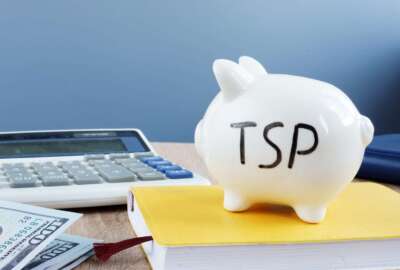
2 upcoming TSP policies to change the way participants save, withdraw money
The Thrift Savings Plan will begin to set automatic contribution rates for new participants at 5% starting this fall.
Future participants to the Thrift Savings Plan will get an easy retirement savings boost later this fall.
The Federal Retirement Thrift Investment Board (FRTIB) will set automatic contribution rates at 5% for new TSP participants, the agency detailed in a proposed rule, which it released last week.
This means that for new or rehired federal employees, those participants will automatically begin to contribute 5% of their basic pay toward their TSP, unless they elect otherwise.
The executive director of the Federal Thrift Retirement Investment Board has the authority to select default contribution rates of anywhere from 2-to-5% for new, automatically-enrolled TSP participants.
Currently, new participants are automatically enrolled at 3%. This includes participants in the Federal Employees Retirement System hired or rehired after July 31, 2010, members in the Civil Service Retirement System rehired after that same date and military members who began serving on or after Jan. 1, 2018.
The changes to the automatic enrollment program will go into effect for most new participants on Oct. 1, according to the FRTIB. Participants in the blended retirement services program who are automatically re-enrolled in the TSP on or after Jan. 1, 2021 will also see higher contribution rates.
The changes won’t impact existing automatically-enrolled TSP participants, and all TSP participants can change their contribution rates at any time.
The goal of changing the automatic enrollment rate, the TSP said, is to help its participants better prepare and save for retirement.
About 26% of participants were contributing less than 5% toward their TSP at the end of 2018, according to the FRTIB.
Participants must contribute 5% of their basic pay in order to receive their agency’s full matching contribution.
“Increasing the rate to 5% not only increases the amount that a participant saves from his or her basic pay but also ensures that that participant receives the full amount of agency/service matching contributions he or she is entitled to, both of which allow the participant, everything else being equal, to achieve significantly greater retirement savings,” the FRTIB wrote in its proposed rule.
TSP hardship withdrawals for natural disasters
In addition, the TSP has proposed allowing its participants to take a hardship withdrawal for expenses incurred due to a natural disaster.
The planned change, which the TSP described in a proposed rule issued earlier this month, is mostly a formality.
Under current law, TSP in-service participants can withdraw money from their TSP for one of four reasons: negative monthly cash flow, medical expenses for the participant or his or her spouse or dependents, repairs or property replacement from a personal casualty loss or attorneys’ fees and court costs for a participant’s divorce or separation.
Lost income due to a natural disaster wasn’t one of the four authorized hardship expenses, so the TSP relied on the IRS to issue guidance and make announcements authorizing participants to take hardship withdrawals for specific events.
But the IRS has decided to stop issuing these announcements. Instead, it added lost expenses and income due to a FEMA-declared natural disaster to the list of “safe harbor” expenses eligible for financial hardship.
Now, the TSP is planning to do the same.
Simply adding FEMA-declared natural disasters to the list of eligible expenses for financial hardship should eliminate a step or two for the TSP, who, like the IRS, also had to inform participants when they could take a withdrawal for this reason.
Read more Pay & Benefits news
In the past, the TSP allowed participants to take hardship withdrawals after Hurricanes Harvey and Irma or after the California wildfires in 2017. An uptick in hardship withdrawals due to a recent natural disaster have been relatively easy to track, but it’s been more difficult to account for recent fluctuations for other reasons.
The FRTIB, for example, saw a 17% jump in hardship withdrawals in January over the previous month.
Partial withdrawals, meanwhile, were up 64% over the previous month, according to the FRTIB.
It’s unclear what’s driving the withdrawal numbers to fluctuate, the agency said.
The FRTIB introduced a new slate of options last fall, which allowed separated participants to take unlimited withdrawals. In-service participants of a certain age can take up to four withdrawals as well under the new program.
“The additional withdrawal options that went into effect in September are changing the way participants access their accounts, and we don’t yet have a baseline to judge behavior against,” Kim Weaver, the agency’s director of external affairs, said.
Copyright © 2025 Federal News Network. All rights reserved. This website is not intended for users located within the European Economic Area.
Nicole Ogrysko is a reporter for Federal News Network focusing on the federal workforce and federal pay and benefits.
Follow @nogryskoWFED




